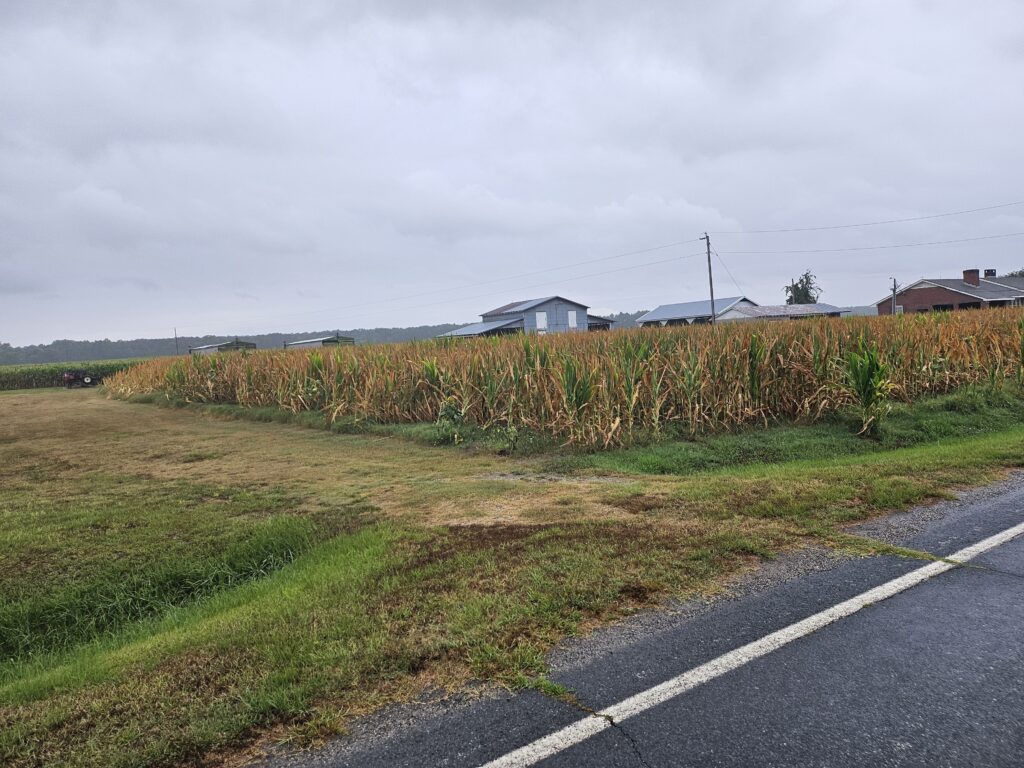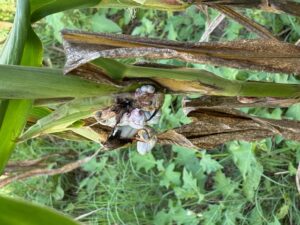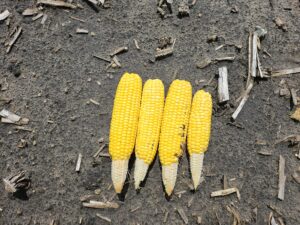Finally Rain! Was It Too Late for Corn?
go.ncsu.edu/readext?1016836
en Español / em Português
El inglés es el idioma de control de esta página. En la medida en que haya algún conflicto entre la traducción al inglés y la traducción, el inglés prevalece.
Al hacer clic en el enlace de traducción se activa un servicio de traducción gratuito para convertir la página al español. Al igual que con cualquier traducción por Internet, la conversión no es sensible al contexto y puede que no traduzca el texto en su significado original. NC State Extension no garantiza la exactitud del texto traducido. Por favor, tenga en cuenta que algunas aplicaciones y/o servicios pueden no funcionar como se espera cuando se traducen.
Português
Inglês é o idioma de controle desta página. Na medida que haja algum conflito entre o texto original em Inglês e a tradução, o Inglês prevalece.
Ao clicar no link de tradução, um serviço gratuito de tradução será ativado para converter a página para o Português. Como em qualquer tradução pela internet, a conversão não é sensivel ao contexto e pode não ocorrer a tradução para o significado orginal. O serviço de Extensão da Carolina do Norte (NC State Extension) não garante a exatidão do texto traduzido. Por favor, observe que algumas funções ou serviços podem não funcionar como esperado após a tradução.
English
English is the controlling language of this page. To the extent there is any conflict between the English text and the translation, English controls.
Clicking on the translation link activates a free translation service to convert the page to Spanish. As with any Internet translation, the conversion is not context-sensitive and may not translate the text to its original meaning. NC State Extension does not guarantee the accuracy of the translated text. Please note that some applications and/or services may not function as expected when translated.
Collapse ▲I came across this article written by Corn Growers Association of North Carolina. Many people who have planted corn this year have been hit by the drought hard, and we are finally starting to get some rain, but was the rain too late?
“Just when you thought it would never rain again, along comes rain. Rain yesterday, rain today, rain tomorrow. In some places too much rain. So, now that precipitation is back, the question becomes, “Is it too late to save my corn crop?” or perhaps, “How has my corn crop been impacted?”
It is never a good idea to assess the consequences of a weather event while still experiencing the event. Rather, it is better to wait until the event has passed and then see what its impacts were. This is true whether that event is hail, freeze, flood, or drought.
Now that the dust has given way to mud let’s look at the 2024 corn crop and what needs to be done to save as much yield potential as possible.
- What Can’t Be Salvaged – Even now it is difficult to determine how much of the 2024 North Carolina corn crop has been lost to dry weather. County assessments are still being done and the best numbers will only become available after harvest when the crop insurance adjusters are done. Some fields where the plants turned completely brown are easy to call (Picture 1). However, estimates are that only 5 to 10% of the corn acres fall into this category.

Corn Field
The larger problem will be fields where the corn is still green and where pollination did not occur or where there are ears with only a few viable kernels. Right now, corn growers should be going through their fields looking at the kernel formation on the ears and determining yield potential. To help with this there are good resources on the NC State Corn portal that describe how to count ears and kernels on the ear to calculate potential yield.
One thing I have noticed is the presence of corn smut in fields where there was poor pollination. Corn smut infects the ovules on the ear that did not receive pollen (Picture 2).With the recent rain, smut is growing from these infected ovules. If you are seeing a lot of smut in your fields this is an indication that pollination was affected and you need to assess yield potential in these fields. As of late July, I estimate that about 35% of the corn crop will be lost due to desiccation and poor pollination.

Corn Smut
- Don’t Give Up Too Early – As mentioned in a previous article one of the problems with assessing the impact of damage is that there is a tendency to give up on a crop that still has the potential to make a comeback. This is especially true in corn when the drought impacts crop height. Short corn plants can still produce above average yield.
In looking at some corn planted in early May, I see many fields with short-statured plants but have normal sized ears with a full set off kernels. Even corn ears that have 1 to 2” of the tip of the ear where kernels did not pollinate can still produce a respectable yield due to compensation in which the remaining kernels get larger (Picture 3). In assessing fields across the state, I am encouraged by what I see in terms of ear size and the potential for this crop to compensate for the drought damage that occurred. There will be some areas of North Carolina where corn yield will exceed 250 bushels per acre.

Corn
- Make a Plan to Prevent Further Damage – The issue that corn growers in North Carolina face is that due to the drought stress at silking and now excessive rainfall, as we reach maturity there is a heightened risk of ear and kernel rot.
We have already accumulated enough heat units for this crop to reach maturity ahead of normal (normal harvest begins in mid-August in the southern counties through October in the Piedmont).Already corn in the southern counties is at maturity and I expect with better weather corn will be mature in the northern counties by mid-August.
The best way to prevent damage from ear and kernel rot is to harvest as soon as possible once the corn reaches maturity. The increase in corn smut mentioned earlier is just a harbinger of potential ear rots to come. Head these off by planning on harvesting as early as possible.
I recently saw an old newspaper from the 1930s with the headline “Hard Times in Pamlico County”. Farmers are no strangers to hard times. In such times it is easy to get discouraged by the turn of fate. However, it is important to take heart in what corn growers in this state have accomplished through hard work, careful investment, and better knowledge. It is important to recognize the progress that has been made in growing corn under the intense stress that was experienced in North Carolina in 2024. In the past under such a drought most of the corn crop in the state would have been lost. But with better genetics, better crop management and better farming practices farmers in North Carolina in 2024 will still harvest over 650,000 acres of corn at a yield over 110 bushels per acre. I see a future where our understanding of the corn plant and our land will lead to a day when we will be able to weather the storms with confidence.”




